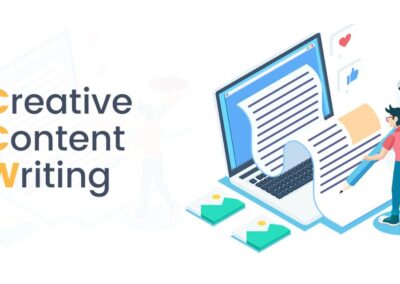Before diving into the specifics of creating a newsletter, it’s crucial to understand its purpose. A professional newsletter should aim to inform, engage, and convert your audience. It’s not merely about selling but building a relationship with your readers. By providing valuable content consistently, you establish trust and loyalty, which can eventually lead to increased sales and customer retention.
Building Relationships Over Transactions
The essence of a successful newsletter lies in relationship-building rather than focusing solely on transactions. By delivering content that resonates with your audience, you create a foundation of trust. When your readers see your newsletter as a resource rather than a sales pitch, they are more likely to engage and remain loyal to your brand.
Educating and Informing
A well-crafted newsletter serves as an educational tool. It provides insights, news, and updates that your audience finds valuable. This educational aspect positions your brand as an authority in your industry, enhancing credibility. By consistently informing your readers, you keep them engaged and encourage them to turn to you for expertise.
Encouraging Audience Engagement
Engagement is a two-way street. While newsletters primarily disseminate information, they should also encourage feedback and interaction. Including questions, polls, or invitations to join discussions can transform passive readers into active participants. This interaction not only enriches your content but also strengthens the bond with your audience.

Setting Clear Goals
Every successful newsletter starts with clearly defined goals. Are you looking to increase website traffic, boost sales, or simply keep your audience informed about industry trends? Establishing clear objectives will guide your content creation process and ensure your newsletters are aligned with your overall business strategy.
Defining Success Metrics
To measure the effectiveness of your newsletter, you must first define what success looks like. This could be open rates, click-through rates, or the number of new leads generated. By setting these metrics, you can track progress and make data-driven decisions to enhance your newsletter’s performance.
Aligning with Business Objectives
Your newsletter should be a reflection of your broader business objectives. Whether aiming to increase brand awareness or promote a new product line, your content should support these goals. By aligning your newsletter with your business strategy, you ensure that your efforts contribute to the overarching success of your company.
Adapting to Audience Needs
Goals should not be static; they need to evolve as your audience and market dynamics change. Regularly review and update your goals to ensure they remain relevant. By staying attuned to your audience’s changing needs, you can keep your newsletter engaging and impactful.
Common Pitfalls in Professional Newsletters
Even the most well-intentioned newsletters can fall short if you’re not aware of potential pitfalls. Here are some common mistakes to avoid:
Overloading with Information
One of the most frequent errors in business newsletters is cramming too much information into a single issue. While it’s tempting to share as much as possible, this can overwhelm your readers. Instead, focus on a few key points and provide links to additional resources if necessary.
Prioritizing Key Messages
To avoid overwhelming readers, prioritize the key messages you want to convey. Decide on the most important topics and focus on delivering these effectively. By highlighting essential information, you make it easier for readers to digest and act upon your content.
Using Concise Language
Brevity is crucial in maintaining reader interest. Use clear and concise language to communicate your points. Short sentences and straightforward vocabulary help ensure that your message is understood quickly, reducing the risk of losing reader attention.
Incorporating Readable Formats
Present information in a format that’s easy to scan. Utilize bullet points, numbered lists, and brief paragraphs to enhance readability. This structured approach helps readers absorb information efficiently and encourages them to engage more deeply with your content.
Ignoring Design and Layout
A poorly designed newsletter can turn readers away before they even start reading. Ensure your design is clean, professional, and aligned with your brand identity. Use headers, subheaders, and bullet points to break up text and make it easy to skim. Consider using images and graphics to enhance your message without overloading the reader.
Consistency with Brand Identity
The design of your newsletter should reflect your brand’s identity. Consistent use of colors, fonts, and logos reinforces brand recognition. This visual consistency not only makes your newsletter more appealing but also strengthens your brand’s presence in the minds of your readers.
Enhancing Visual Appeal
Visual elements play a significant role in capturing attention. Incorporate images, infographics, and videos to complement your text. These elements not only make your newsletter more engaging but also help convey complex information more effectively.
Balancing Aesthetic and Functionality
While aesthetics are important, functionality should not be compromised. Ensure that your design supports easy navigation and readability. An intuitive layout guides readers through your content seamlessly, enhancing their overall experience.
Lack of Personalization
With the wealth of data available today, there’s no excuse for not personalizing your newsletters. Personalization goes beyond just addressing your readers by name. Tailor content based on their preferences, past interactions, and purchase history to make your newsletters more relevant and engaging.
Segmenting Your Audience
Effective personalization starts with audience segmentation. Divide your subscribers into groups based on demographics, behavior, or preferences. This segmentation allows you to tailor content to specific interests, increasing the likelihood of engagement and conversion.
Utilizing Dynamic Content
Dynamic content enables you to deliver personalized experiences within a single newsletter. By using conditional content blocks, you can present different information to different segments. This customization ensures that each reader receives content that’s most relevant to them.
Leveraging Behavioral Insights
Use data on past interactions to inform your personalization strategy. Track how readers engage with your newsletters and use this information to refine your content. By understanding your audience’s behavior, you can deliver content that resonates on a deeper level.
Inconsistent Sending Schedule
Consistency is key when it comes to newsletters. Sporadic sending can confuse subscribers and lead to disengagement. Establish a regular schedule that your audience can anticipate, whether it’s weekly, bi-weekly, or monthly, and stick to it.
Establishing a Reliable Cadence
Determine a sending schedule that aligns with your audience’s preferences and stick to it. Consistency creates anticipation and helps build a routine for your subscribers. By delivering content at expected intervals, you enhance reader engagement and loyalty.
Balancing Frequency and Content Quality
While consistency is important, it shouldn’t come at the cost of content quality. Ensure that each newsletter delivers valuable insights and information. Strike a balance between maintaining a regular schedule and providing high-quality content that meets your audience’s expectations.
Monitoring Engagement Patterns
Regularly assess how your sending schedule affects engagement. Track open rates, click-through rates, and other metrics to gauge reader interest. Use this data to adjust your schedule if necessary, ensuring that it aligns with your audience’s preferences and maximizes impact.
Newsletter Tips for Success
To create newsletters that captivate and convert, consider these expert tips:
Crafting Compelling Subject Lines
The subject line is your first impression and can determine whether your email is opened or ignored. Make it intriguing, relevant, and concise. A good rule of thumb is to keep it under 50 characters and include a call-to-action or highlight a benefit.
Testing Different Approaches
Experiment with different styles of subject lines to see what resonates best with your audience. Test variations such as questions, statements, or emojis to identify what captures attention. This experimentation allows you to refine your approach and increase open rates over time.
Incorporating Personalization
Personalized subject lines can significantly boost open rates. Use the recipient’s name or reference past interactions to create a sense of familiarity. By making the subject line feel personal, you increase the chances of it being noticed amidst a crowded inbox.
Creating a Sense of Urgency
Urgency can be a powerful motivator for opening emails. Use time-sensitive language or highlight limited-time offers to encourage immediate action. However, ensure that this urgency is genuine and aligns with the content of your newsletter to maintain trust.
Focus on Quality Content
Content is the heart of your newsletter. Ensure it is well-researched, valuable, and relevant to your audience’s interests. Mix up your content with articles, tips, case studies, and news to keep it diverse and engaging.
Prioritizing Originality and Value
Strive to provide content that is both original and valuable to your audience. Avoid recycling information readily available elsewhere. Instead, offer unique insights or perspectives that set your newsletter apart as a must-read source.

Balancing Informational and Promotional Content
While newsletters can promote products or services, they should primarily inform and engage. Strike a balance between educational content and promotional messages. By focusing on delivering value first, you build trust and credibility with your readers.
Encouraging Reader Interaction
Invite readers to engage with your content by including interactive elements. Polls, surveys, or calls for feedback can transform passive reading into active participation. This interaction not only enhances reader engagement but also provides valuable insights into their preferences.
Call-to-Action (CTA) Clarity
Every newsletter should have a clear call-to-action. Whether it’s directing readers to your website, encouraging them to download a resource, or prompting a purchase, make sure your CTA stands out and is easy to follow.
Designing Visually Appealing CTAs
Ensure that your CTAs are visually distinct and easy to spot. Use contrasting colors, buttons, or bold text to draw attention. A well-designed CTA stands out from the rest of your content, guiding readers towards the desired action.
Providing Clear Instructions
Clarity is key when crafting CTAs. Use concise and specific language to convey the action you want readers to take. Avoid ambiguity by clearly stating what the reader will gain by clicking the CTA, whether it’s access to exclusive content or a special offer.
Testing CTA Effectiveness
Regularly assess the performance of your CTAs through A/B testing. Experiment with different wording, placement, or design to determine what drives the highest engagement. Use these insights to optimize your CTAs and enhance their effectiveness.
A/B Testing for Optimization
To continually improve your newsletters, implement A/B testing. Test different subject lines, layouts, and content types to see what resonates most with your audience. Use the data gathered to refine your approach and boost engagement over time.
Identifying Test Variables
Determine which elements of your newsletter you want to test. This could include subject lines, images, or content formats. By isolating specific variables, you can accurately assess their impact on reader engagement and make informed improvements.
Analyzing Test Results
Carefully analyze the results of your A/B tests to identify patterns and trends. Look for statistically significant differences in performance metrics such as open rates or click-through rates. This analysis helps you understand what resonates with your audience and guides future content strategies.
Iterating Based on Insights
Use the insights gained from testing to refine your newsletter strategy. Continuously iterate and improve based on what you learn. This iterative approach ensures that your newsletters remain relevant and effective in meeting your audience’s evolving needs.
Leveraging Tools Like Newsletter Pro
Consider utilizing tools like Newsletter Pro to streamline your newsletter creation process. Such platforms offer templates, automation features, and analytics to help you design professional newsletters with ease. By leveraging these tools, you can focus more on content creation and strategy, leaving the technical aspects to the software.
Streamlining Content Creation
Newsletter tools provide a range of templates and design options that simplify content creation. These resources save time and ensure that your newsletters maintain a consistent, professional appearance. By streamlining the design process, you can dedicate more effort to crafting compelling content.
Automating Distribution and Analysis
Automation features allow you to schedule and distribute newsletters effortlessly. These tools also offer analytics that provide insights into reader engagement and behavior. By automating routine tasks and analyzing data, you can focus on refining your strategy and enhancing your newsletter’s effectiveness.
Enhancing Collaboration and Efficiency
Collaboration features enable teams to work seamlessly on newsletter creation. Multiple contributors can edit and review content, ensuring that the final product reflects diverse perspectives. This collaborative approach enhances content quality and streamlines the production process.
Building a Quality Subscriber List
A successful newsletter starts with a quality subscriber list. Encourage sign-ups through your website, social media channels, and events. Ensure you’re obtaining consent and provide value from the get-go to maintain a healthy list of engaged readers.
Encouraging Opt-Ins Across Channels
Promote newsletter sign-ups across various channels to reach a wider audience. Use website pop-ups, social media campaigns, and event registrations to capture potential subscribers. By diversifying your approach, you increase the chances of attracting engaged readers.
Offering Incentives for Sign-Ups
Incentivize sign-ups by offering exclusive content, discounts, or access to special events. These incentives provide immediate value to subscribers, encouraging them to join your list. Ensure that the incentives align with your brand and resonate with your target audience.
Maintaining List Health and Engagement
Regularly clean your subscriber list to maintain its quality. Remove inactive subscribers and ensure that new additions are genuinely interested in your content. By focusing on engaged readers, you enhance the effectiveness of your newsletters and improve overall engagement metrics.
Compliance with Regulations
Stay informed about regulations such as GDPR and CAN-SPAM to ensure your newsletters are compliant. Provide an easy way for subscribers to opt-out, and always be transparent about how their data is used.
Understanding Legal Requirements
Familiarize yourself with relevant data protection laws and regulations. This knowledge ensures that your newsletter practices align with legal requirements, protecting both your business and your subscribers. Regularly review and update your compliance measures to stay current.
Implementing Transparent Practices
Transparency is key to maintaining trust with your subscribers. Clearly communicate how you collect, store, and use their data. Provide accessible privacy policies and ensure that subscribers understand their rights, including the ability to opt-out easily.
Managing Subscriber Preferences
Empower subscribers to manage their preferences regarding content frequency and topics. Allow them to update their information or unsubscribe without hassle. By respecting subscriber preferences, you enhance trust and foster long-term engagement.
Conclusion
Creating professional newsletters is a powerful strategy for connecting with your audience and achieving your business goals. By avoiding common pitfalls and implementing the tips outlined in this article, you can craft newsletters that not only inform and engage but also drive results. Remember, the key to success lies in understanding your audience, delivering quality content, and maintaining consistency. With the right approach and tools, your newsletters can become an invaluable asset to your business strategy.
Embracing Continuous Improvement
The world of newsletters is dynamic, requiring constant adaptation and improvement. Stay open to feedback and be willing to adjust your strategies based on performance data and reader input. By embracing continuous improvement, you ensure that your newsletters remain relevant and effective in a rapidly changing landscape.
Celebrating Success and Learning from Challenges
Acknowledge the successes achieved through your newsletters and learn from any challenges encountered. Celebrate milestones such as increased engagement or subscriber growth, and use challenges as opportunities for growth. This reflective approach keeps your team motivated and focused on delivering exceptional newsletters.
Reinforcing Brand Loyalty and Engagement
Ultimately, the goal of your newsletter is to strengthen brand loyalty and engagement. By delivering valuable content consistently, you build a community of engaged readers who trust and advocate for your brand. This loyalty translates into long-term business success and positions your newsletter as a cornerstone of your marketing strategy.
Partner with Newsletter Pro for Quality Newsletters
Ready to elevate your newsletter strategy to new heights? Partner with Newsletter Pro to create newsletters that captivate your audience and achieve your business goals. Our team of experts is dedicated to delivering quality content that enhances brand loyalty and drives engagement. Contact us today to learn how we can help transform your newsletters into a powerful marketing tool. Visit our website or reach out to our team directly to get started. Don’t miss the opportunity to make your newsletters an essential asset in your marketing strategy!






